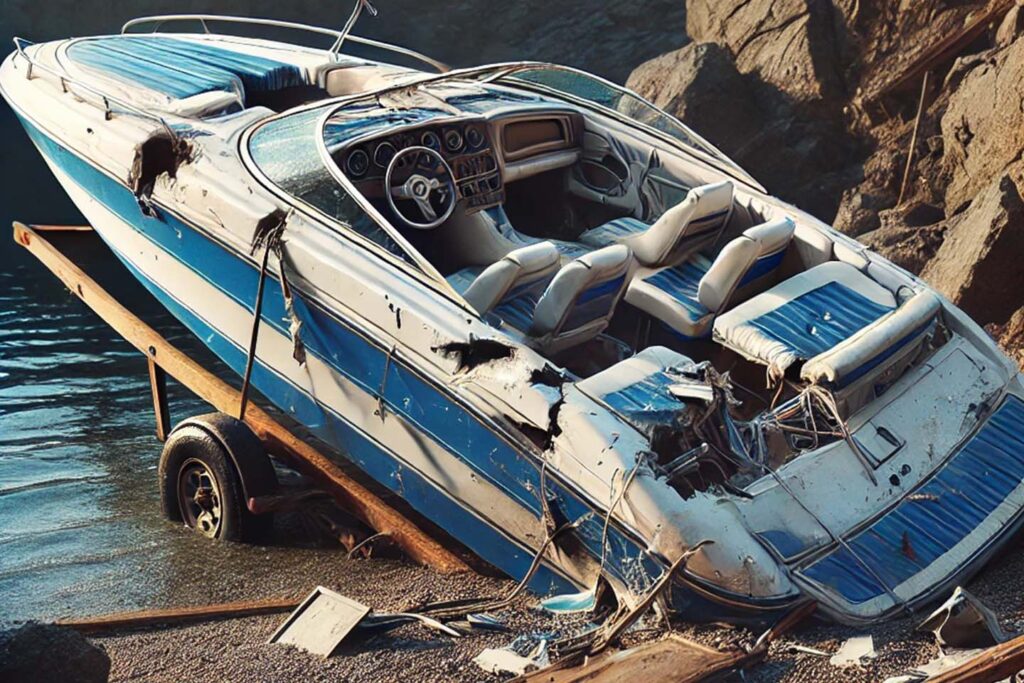
By CAPT Mark Poster, CMI
Many Marine Law Enforcement and “expert” reports submitted either miss the point of, or don’t understand violations of the Navigation Rules. Specifically, which vessel is at fault, and why is one vessel more at fault than the other? According to the Rules, if both vessels are underway and a collision results, then they are both at fault to a degree, and the courts decide on the percentage of fault attributable to each party. Report writers should be aware that the Navigation Rules do not address three vessel situations. So, how does the officer, investigator or court make this determination?
Let’s look at a fatal collision that I worked on many years ago to explore the possible violations and see where each vessel contributed to an unnecessary loss of life.
It was Spring Break on one of the Colorado River System lakes. A 52-foot houseboat was loaded with college students making their way up the lake, maintaining course and speed.
A smaller recreational vessel of 23-feet was about 100 feet off the houseboat’s port side traveling at a higher speed, creating an overtaking situation with the houseboat.
Another 19-foot bowrider was very close alongside the houseboat’s starboard side amidship, traveling at about the same course and speed as the houseboat. One passenger was seated in the starboard side bowrider seat. This 19-foot vessel was hidden from view of the faster 23-foot vessel by virtue of its’ close proximity on the houseboat’s starboard side.
We’ll call the port side vessel (traveling at a much higher speed) V1, and the slower vessel with the bowrider passenger will be referred to as V2.
As vessel V1 passed the houseboat on the houseboat’s port side, the operator of V1 made a long starboard turn, cutting close by the houseboat’s bow.
At about the same time, the slower bowrider vessel V2, which was completely hidden from the view of the faster vessel V1, accelerated on the original course, still close by the houseboat. As vessel V2 passed the houseboat’s bow, it placed itself directly into the path of the much faster vessel V1, creating a risk of collision.
Due to the positioning of vessels, V1 and V2, being on opposite sides of the houseboat, both were shielded from each other’s view. The faster vessel V1, coming close by and around the houseboat’s bow collided with the much slower bowrider, killing the passenger.
So, which vessel is at fault? Is one vessel more at fault than the other in this situation? Did the houseboat contribute to this accident? Can any fault be attributed to the houseboat operator? How does one make this determination? Let’s begin by exploring the applicable Rules.
But first, what about the houseboat? Does that operator have any responsibility in creating the situation described? The answer is: No/None. Why? Because he did not create the situation and had no control over the other vessels’ actions. See Rule 34 below. The other two operators, V1 and V2, are responsible for placing themselves on conflicting courses ~ without due regard to what possible danger was on the other side of the houseboat.
Possible Violations
Rule 5 – Safe Speed: By V1. For traveling at a speed and proximity whereby he had little or no time to evaluate what was on the far side of the houseboat.
Rule 6 – Lookout: By both vessels. For placing themselves in a position of unknown peril of what possible dangers may be in their paths due to, and beyond, the visual obstruction created by the houseboat.
Rule 7 – Risk of Collision: By both vessels. For failing to make a proper determination of the possibility of collision during the passing of the houseboat.
Rule 8 – Action to Avoid Collision: By V1. For failing to take early and effective collision avoidance maneuvers.
Rule 13 – Overtaking: By V1 for overtaking the houseboat in an unsafe manner.
Rule 15 – Crossing: By V1 over V2. By putting himself into a crossing situation with V2.
Rule 16 – Action by Give-Way Vessel: By V1. For crossing from V2’s port side, failing to slow, stop or yield to avoid the collision with V2.
Additionally, all three vessels failed to follow Rule 34 Maneuvering and Warning Signals, which may have helped alleviate the collision. If a proper sound signal of two short blasts, meaning “I intend to leave you on my starboard side”, had been sounded by the overtaking vessel V1 as they passed the houseboat as required, a different outcome may have occurred. The houseboat operator should have provided the proper Warning Signal of five or more short blasts as a warning to the other vessels – if he was aware of the impending situation. Unfortunately, the houseboat operator was never interviewed, so it is unknown if he was aware of either of the two vessels. V2 should have sounded one short blast during the passing maneuver; “I intend to leave you on my port side.”
In this case, even though both operators contributed to the collision, the operator of V1, by virtue of his much higher speed, created upon himself a higher burden of responsibility, and so was determined to be more at fault.
Our job is to provide the courts with a clear, concise report detailing where each party went wrong so that the courts may make an informed, fair decision on comparative fault.
This is a great example of why knowledge and application of the Navigation Rules are so important to both the recreational boater and to boat accident reconstructionists.